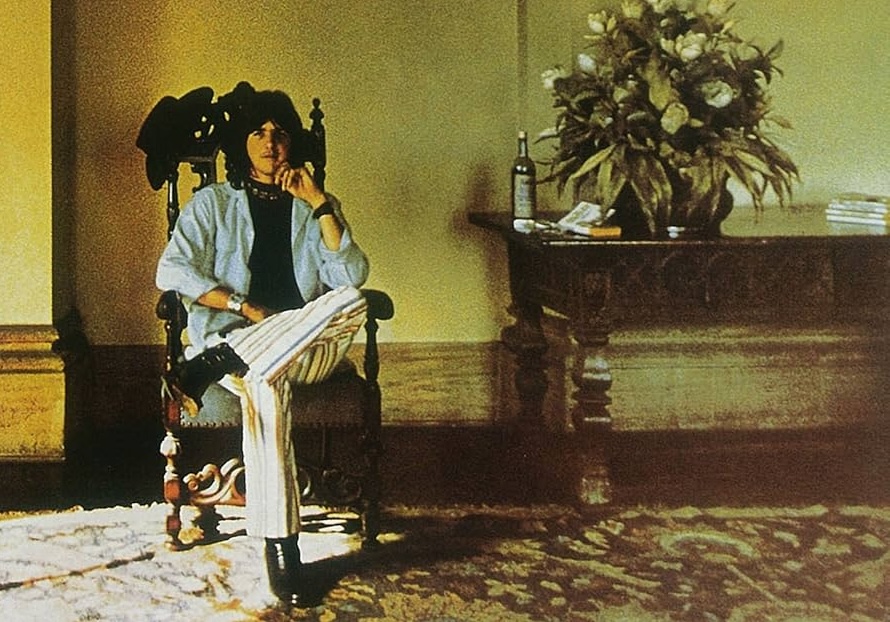Album Essentials: Gram Parsons "G.P." (1973)

By Dave Swanson - Summit FM Contributor
Like many subgenres, country rock has somewhat murky origins. Who was first to the table, who did it best, who was most successful, and so on. While not being first, no one has been more deeply connected to the concept of 'country rock' than Gram Parsons.
Born in Florida in 1946 and raised in Waycross, Georgia, Parsons was destined for a life in music. His musical roots date back to the influence of the early 60s folk boom, a path that would eventually lead him back to his first love, country music.
In 1966, he formed the International Submarine Band, which was signed to LHI Records, a label run by singer/songwriter/producer Lee Hazlewood, at the time, a hot property due to his recordings with Nancy Sinatra. The band issued one album, Safe At Home, and was briefly signed to Columbia Records, who released one killer single, “Sum Up Broke,” b/w “One Day Week,” before falling off the face of the earth!
In short order, Parsons turned back up in Hollywood, joining the Byrds to replace the departed David Crosby. It was at this time that Parson's influence took shape. The Byrds were at a crossroads, with band leader Roger McGuinn undecided about what direction to follow following the 'Notorious Byrd Brothers' LP. He thought a straight country trip might be the answer but was just as convinced that incorporating newly acquired synthesizers and other electronic sounds was his destiny. Parsons, along with partner in crime Chris Hillman, pushed the band onto the country path and never looked back.
The landmark, if somewhat over-rated, Sweetheart Of The Rodeo, was released in the summer of 1968 to a less than overwhelming response. Part of the problem was that most of Parsons' performances were kept off the album due to contractual issues. The album, though fine, lacked a certain exclamation point that Parsons' soulful vocals added. Those original vocals have been released over the years, proving how much more solid the LP would have been with Parsons’s recorded involvement. The band was falling apart, and both Parsons and Hillman saw what could be. They left the Byrds to form the highly influential Flying Burrito Brothers.
FBB released two albums of first-rate country rock. They had killer songs, performances, style, and vibe, yet the band and albums went nowhere! Good reviews never turned into sales. They did perform at the infamous Altamont concert, which led to a deep friendship between Parsons and Keith Richards. As the story goes, Parsons long claimed that Richards asked him to come up with a steel guitar part for the song “Wild Horses,” which led Gram to claim the song was written for him, at which point he recorded a version with the Burritos, which was released before the Stones own version. Though the Burritos would continue, Parsons left the band to follow his muse towards a solo career. After hanging out endlessly with Richards, he eventually returned home to the USA and began putting together what would become G.P., his first solo album.
Recorded in late 1972 and released in January 1973, G.P. was a perfectly captured snapshot of where Parsons was at, both musical and personal, at that moment in his life. He had signed to Reprise Records, which released the album featuring members of his touring band, the Fallen Angels. At this time, he had discovered the one person who would be his perfect counterpoint, Emmylou Harris. Her beautiful vocals and presence proved the perfect flipside to Parsons, and their voices blended like the prime recipe.
The album is filled from start to finish with classics such as “Still Feeling Blue,” “A Song For You,” “Streets Of Baltimore,” “She,” and “The New Soft Shoe,” all of which became considered Gram classics over the years.
The album received extensive press coverage, and the band's live shows were a joy. However, for whatever reason, they could not rise above the swamp of cult status. At the same time, the Eagles were quickly becoming huge, selling tons of records influenced by all that Parsons had put on the table first.
Here is where that argument about who was first gets dragged in. Yes, Parsons was among the first to do the country rock thing and arguably the one who did it best; however, the Byrds were their pre-Parsons as heard on early albums. Michael Nesmith tried to work country into the Monkee’s vocabulary as early as their first album. The Beatles had covered Buck Owens. Elvis and the Everly Brothers spoke the language, as did Jerry Lee Lewis and Buddy Holly. The answer is, of course, that country music was always part of the DNA of Rock and Roll!
That said, G.P. has become a benchmark of sorts in the genre, and its follow-up, the posthumously released, 'Grievous Angel,' served as part two of a one-two punch. The legend and legacy of Gram Parsons can, in large part, be traced back to Elvis Costello, who covered two Parsons songs on his 1981 album Almost Blue, and even more significantly to Sid Griffin of the Los Angeles band the Long Ryders, who sang the praises of Parsons and his music to anyone who would listen. He was the first to write a biography on Gram, routinely perform his material, and be involved in anything Parsons-related for years to come. Between those two fans, and in later years bands like Uncle Tupelo, Gram was elevated to cult status and is now routinely mentioned as a pioneer of not only 'country rock' but the entire American genre, and they're not wrong.
G.P. is not only essential but also a significant piece of the puzzle of where rock and roll headed once the explosion of the 1960s music world was rebuilding and finding a new road ahead. While that may sound a bit lofty, the bottom line is that it is one great batch of songs.






